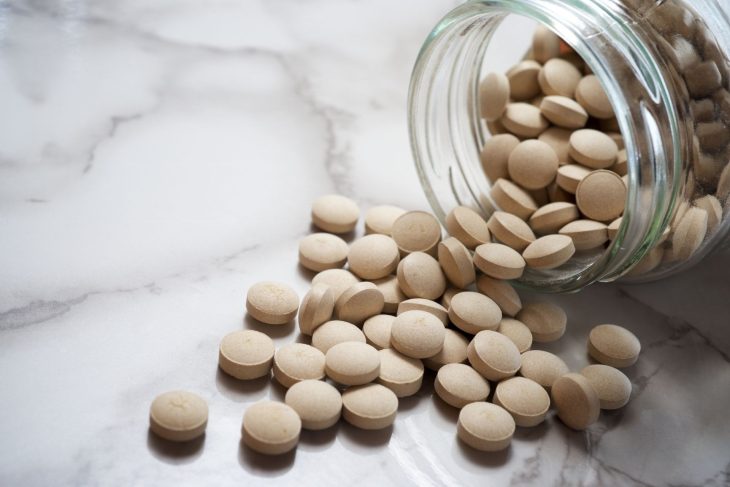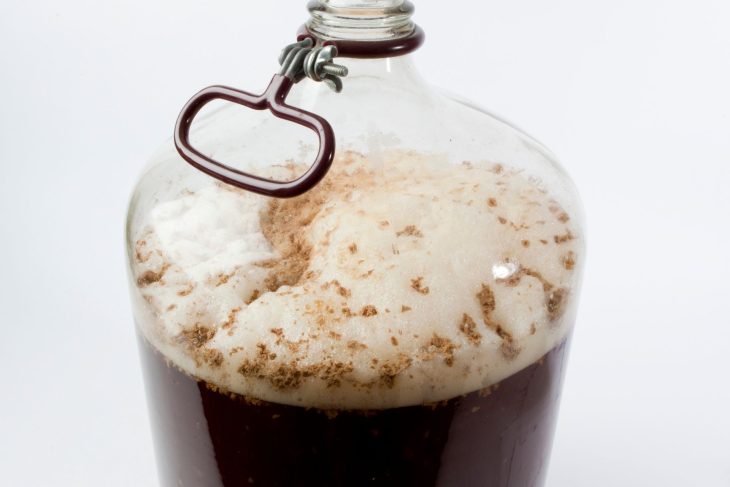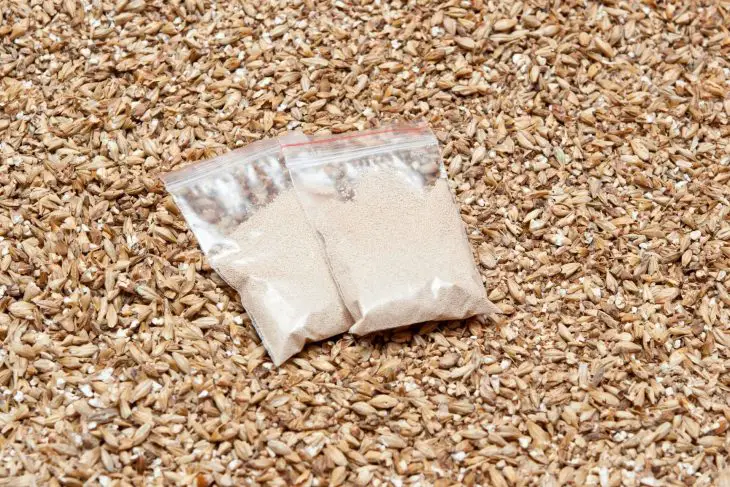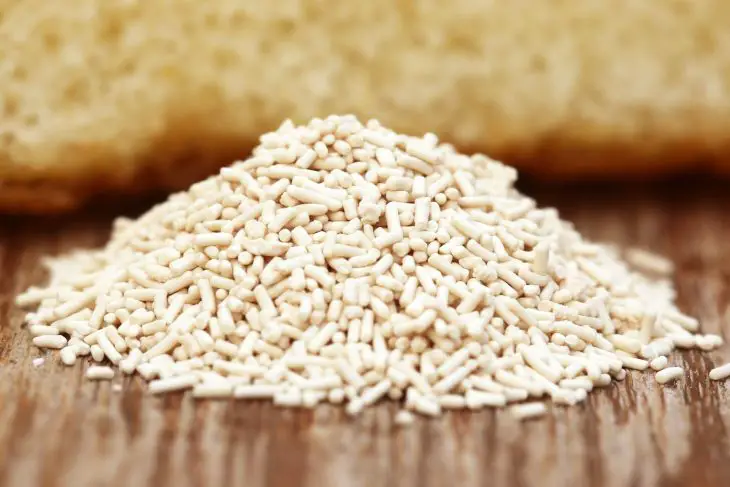Hey there! This site is reader-supported and we earn commissions if you purchase products from retailers after clicking on a link from our site.

When it comes to brewing up a delectable beer, you might tend to believe that yeast is king and that you should only stick to what the recipe tells you. But what if you could use all that leftover brewer’s yeast for something else—something like bread? After all, a hearty sandwich pairs excellently with many homemade brews! Besides, you get a chance to use up any leftover brewer’s yeast before it goes bad.
What is Brewer’s Yeast?
Brewer’s yeast is a species of one-celled fungus classified as Saccharomyces cerevisiae (S. cerevisiae). There are many forms of Saccharomyces cerevisiae that are available in the supermarket these days, but they’re not all the same. The ways these different strains of S. cerevisiae are cultivated can alter their purpose.
Brewer’s yeast, sometimes referred to as beer yeast, is a slow-rising yeast that is particularly effective at brewing beer. It produces tiny bubbles and helps with fermentation.

Sometimes, brewer’s yeast is used as a nutritional supplement or addition to breads for flavor. However, the intrinsically bitter taste can be unappealing to some. Do not confuse brewer’s yeast with torula yeast, nutritional yeast, or baker’s yeast.
- A great, all-purpose yeast for brewing all kinds of ales including Pale Ale, Porter and Stout
- A very hardy yeast strain suited for recipes with sugar and for maltier beer styles
- 10-Pack
Prices pulled from the Amazon Product Advertising API on:
Product prices and availability are accurate as of the date/time indicated and are subject to change. Any price and availability information displayed on [relevant Amazon Site(s), as applicable] at the time of purchase will apply to the purchase of this product.
Different Kinds of Brewer’s Yeast
Contemporary brewing has named two types of beer yeast (ale yeast vs lager yeast) that have differing characteristics. The yeast strain you choose depends on the kind of beer you are hoping to produce. But to get the most joy out of homebrewing, it is recommended you experiment with each kind of brewer’s yeast to see which one you like best.
Here’s a short description of four brewer’s yeast types you might find:
- Ale yeast – Top-fermenting ale yeast is ideal for wheat beer, Altbier, stouts, ales, and porters. There are multiple strains of ale yeast available—too many to name—but all have one thing in common. They have an ideal fermentation temperature of 20 C/68 F.
- Lager yeast – In order to make a lager or a pilsner, you need a different kind of yeast known as Saccharomyces uvarum. This kind of yeast is known as bottom-fermenting, which means the yeast settles on the bottom when fermentation finishes. There are also strains of Saccharomyces eubayanus and pastorianus that are used at low temperatures, where they thrive.
- Belgian yeast – Many Belgian brewers have their own proprietary blend of ale yeast for Belgian-style beer. If you want the phenols, esters, and alcohols that make Belgian beer so delicious, you need the correct yeast.
- Wheat beer yeast – In order to get a recognizable flavor in your wheat beer, you need a strain of yeast that is made precisely for the brew. Most wheat beers are cloudy because the yeast doesn’t flocculate well, but that is what makes wheat beer so delicious.
Just a quick note: You shouldn’t use lager yeast to make bread. Only ale yeast meets the requirements for both beer- and bread-making. Lager yeast takes far too long to generate enough CO2.
How is Brewer’s Yeast Used?
Yeast has a unique role in beer-making. It is a marvel when it meets the sugary goodness of wort. In the fermentation chamber, brewer’s yeast transforms that wort into potable beer. In fact, part of the procedure of brewing beer is specifically for prepping the ingredients and making an environment where the yeast can thrive. The temperature, the sugar content, and the water will all be carefully considered before a brewer pours the wort into the fermenter. The yeast can then get to work creating CO2 and alcohol.
Brewer’s yeast was designed specifically for producing high quality alcohol.
What is Baker’s Yeast?

Baker’s yeast, also a strain of S. cerevisiae, is another term for the yeast used to bake fresh bread, pastries, and cakes. You can find multiple forms of baker’s yeast. When you mix baker’s yeast with sugar, the yeast releases CO2 that helps the dough rise and expand. Presently, baker’s yeast is used as the primary leavening agent in mass-produced bread.
- Bakers Choice Gold provides 10 20% more activity in doughs with high sugar levels
- Vacuum packaging ensures freshness, consistency and minimal activity loss until opened
- Provides uniform fermentation throughout your baking system
- Warmer dough temperatures are preferred while using Bakers Choice Gold; this decreases the need to cool doughs to maintain proper fermentation
- Recommended Usage: All Purpose, Donuts, Sweet Pastries, Conchas, Pan Dulce, All kinds of br
Prices pulled from the Amazon Product Advertising API on:
Product prices and availability are accurate as of the date/time indicated and are subject to change. Any price and availability information displayed on [relevant Amazon Site(s), as applicable] at the time of purchase will apply to the purchase of this product.
Different Types of Baker’s Yeast
You can find baker’s yeast in several forms such as fresh, liquid, instant, and active dry. When you are looking to make bread or beer with the same kind of yeast, you are probably going to reach for active dry yeast. That said, instant yeast is also marketed as bread machine yeast or rapid rise yeast. It is one of the more shelf-stable forms of yeast and can be used in a number of recipes. Active dry yeast, on the other hand, must be introduced first to a warmer liquid for it to be activated.
How is Baker’s Yeast Used?
The main concern in baking is having enough CO2 to get the bread to rise. Depending on what a baker is making, they might include cake (wet) yeast, active dry yeast, instant yeast, or wild yeast (for sourdough). Yeast is either added to the wet or dry ingredients, depending on what is being made.
In summary, baker’s yeast is mainly used for the rising effect from carbon dioxide. Unlike brewer’s yeast, baker’s yeast does not produce ethanol.
Can I Replace Beer Yeast with Baking Yeast?

Most definitely. Baking yeast isn’t just for bread. Remember, our friend S. cerevisiae has some serious skills. Whether you plan on making bread with beer yeast or beer with baker’s yeast, you can substitute either one in with an equivalent amount. The only difference is that the bitterness of brewer’s yeast will change the flavor of your bread or sweet. Similarly, baker’s yeast isn’t as zesty as brewer’s yeast, so your beer might not have the same distinct flavor you’re used to.
Conclusion: Bakers vs Brewers Yeast
The main difference between brewer’s yeast and baking yeast is that brewing yeast makes both alcohol and CO2, while baker’s yeast produces vast amounts of CO2 and negligible alcohol. Brewer’s yeast is for making drinkable beer; baker’s yeast is for making dough rise.
But that doesn’t mean one can’t be swapped out for the other. Though brewer’s yeast is best for beer, you can use ale yeast for bread and baker’s yeast for beer. Why not experiment?
FAQ on Brewer’s Yeast vs Baker’s Yeast For Bread
Both baker’s yeast and brewer’s yeast are strains of a one-celled fungus known as Saccharomyces cerevisiae. Both yeasts can transform sugars and starches into CO2 and ethanol alcohol. Brewer’s yeast is used mainly for beer, and baker’s yeast is used in baked goods and breads. But you can substitute the yeasts for one another in any recipe.
You can use baker’s yeast as a substitute for brewer’s yeast, even though it may not result in the same flavor of beer you need. Also, you should only use baking yeast for ales, never lagers. Ales and lagers require different strains of yeast, and ale yeast is most similar to baker’s yeast.
Yes, you can! Make sure you are using the ale yeast variant of brewer’s yeast. To make bread with brewing yeast, follow the same instructions as you usually would. Proof the yeast at 90 F (32 C) with some flour or sugar. Wait 5-10 minutes for the mixture to foam or bubble. From there, you can add the liquid to the dough and start kneading everything together.

